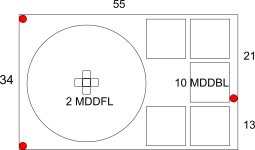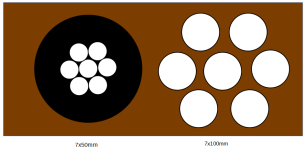Claudio, thank you very much for your generosity in sharing knowledge.
I took advantage of a spreadsheet for calculating musical notes and did not adjust the frequency calculation formula. I'll do it.
This last answer of yours complements everything I need for the moment.
To contextualize I will report why your project interests me so much.
I'm a choral conductor. I have noticed for decades that when unmicrophoned choirs are accompanied by a keyboard and a conventional speaker, there is not a good mix between the sound of the voices and the sound of the speaker(s).
Intuitively, I've almost always aimed the speaker at a nearby wall (when location permits), or at some irregular object. This way the direct sound is minimized and I get a more consistent blend of choir and keyboard sound.
When I found your project I immediately said: this is what I need!
It bears a resemblance to the pipe organ. On the very rare occasions when it is possible for the choir to be accompanied by a pipe organ, the mixture of the choir's voices with the sound of the organ is extremely organic. The same does not happen with a keyboard connected to speakers. Unmicrophoned choir accompanied by a keyboard connected to a speaker is the situation that happens most often.
My questions about dimensions are to adjust the proposal to the venues and also to think about the aesthetics of the set.
I know that some of the questions I've asked are pretty basic for a high-level forum like this one. So, thanks again for your patience and willingness to teach.
I took advantage of a spreadsheet for calculating musical notes and did not adjust the frequency calculation formula. I'll do it.
This last answer of yours complements everything I need for the moment.
To contextualize I will report why your project interests me so much.
I'm a choral conductor. I have noticed for decades that when unmicrophoned choirs are accompanied by a keyboard and a conventional speaker, there is not a good mix between the sound of the voices and the sound of the speaker(s).
Intuitively, I've almost always aimed the speaker at a nearby wall (when location permits), or at some irregular object. This way the direct sound is minimized and I get a more consistent blend of choir and keyboard sound.
When I found your project I immediately said: this is what I need!
It bears a resemblance to the pipe organ. On the very rare occasions when it is possible for the choir to be accompanied by a pipe organ, the mixture of the choir's voices with the sound of the organ is extremely organic. The same does not happen with a keyboard connected to speakers. Unmicrophoned choir accompanied by a keyboard connected to a speaker is the situation that happens most often.
My questions about dimensions are to adjust the proposal to the venues and also to think about the aesthetics of the set.
I know that some of the questions I've asked are pretty basic for a high-level forum like this one. So, thanks again for your patience and willingness to teach.
Hi jaq775,
You can use Google Translate to do this. Here is your post in English ...
This is an English speaking forum. If you are going to post in another language, please also make sure you post the English translation.Este é um fórum de língua inglesa. Se você for postar em outro idioma, certifique-se também de postar a tradução em inglês.
You can use Google Translate to do this. Here is your post in English ...
Greetings Claudio! I'm at the stage of putting together the budgets for the executive part. I have 2 practical questions: (1) Should the longest tube be a maximum of 3400mm so that the delay remains capped at 10ms? (2) For this limit of 3400mm I noticed that the total cost of the tubes is lower the greater the number of octaves (when the number of guides remains the same) What is more acoustically advantageous in the MDD: more octaves or less octaves? Thanks in advance for your willingness to respond.
Greetings Claudio!
I'm at the stage of putting together the budgets for the executive part.
I have 2 practical questions:
(1) Should the largest tube be a maximum of 3400mm so that the delay remains limited to 10ms?
(2) For this limit of 3400mm I noticed that the total cost of the tubes is lower the greater the number of octaves (when the number of guides remains the same). What is more acoustically advantageous in MDD: more octaves or fewer octaves?
Thank you again in advance for your willingness to respond.
I'm at the stage of putting together the budgets for the executive part.
I have 2 practical questions:
(1) Should the largest tube be a maximum of 3400mm so that the delay remains limited to 10ms?
(2) For this limit of 3400mm I noticed that the total cost of the tubes is lower the greater the number of octaves (when the number of guides remains the same). What is more acoustically advantageous in MDD: more octaves or fewer octaves?
Thank you again in advance for your willingness to respond.
Hi jaq775
for me You are the first to make a MDD system with a 30cm driver, good job.
It is a prototype, it will almost certainly require modifications, so the first advice is to save money. I prefer the sound of paper or cardboard waveguides over PVC or other plastic materials, I have been putting off the replacement of the MDDBL load of the MDD3ZC350 V2 prototype (now in pvc) for months. You can use telescoping square post tubes to build the rear sound load, round tubes are fine too.
1 – For the rear acoustic load MDDBL Lmax = 3400 mm is not binding and neither is 10 ms. You can use any Lmax by changing all lengths proportionally. Lmax changes the lowest frequency that the system can reproduce, approximately: Lmax=1000 mm (80 Hz – 3 ms), Lmax=2000 mm (40 Hz – 6 ms), Lmax=4000 mm (20 Hz – 12 ms). Another thing I haven't tried is using an MDD loudspeaker in a large venue (theatre, church, ...). If there are acoustic problems, the larger the dimensions, the greater the multiple delays must be.
2 – To reproduce the bass well MDDBL must work only on one octave, to save money you can try to reduce the number of waveguides to 5. I enclose the table for one octave and 5 waveguides, with two examples of length. For the frontal acoustic load MDDFL the delay distribution is more important to make the source non-point-like, I use 3 octaves. In large rooms with high ceilings I would like to try the effect of Lmax greater than 2000 mm.
As with all loudspeakers, the most important thing is to prevent fixing defects from generating unwanted vibrations as power increases.
for me You are the first to make a MDD system with a 30cm driver, good job.
It is a prototype, it will almost certainly require modifications, so the first advice is to save money. I prefer the sound of paper or cardboard waveguides over PVC or other plastic materials, I have been putting off the replacement of the MDDBL load of the MDD3ZC350 V2 prototype (now in pvc) for months. You can use telescoping square post tubes to build the rear sound load, round tubes are fine too.
1 – For the rear acoustic load MDDBL Lmax = 3400 mm is not binding and neither is 10 ms. You can use any Lmax by changing all lengths proportionally. Lmax changes the lowest frequency that the system can reproduce, approximately: Lmax=1000 mm (80 Hz – 3 ms), Lmax=2000 mm (40 Hz – 6 ms), Lmax=4000 mm (20 Hz – 12 ms). Another thing I haven't tried is using an MDD loudspeaker in a large venue (theatre, church, ...). If there are acoustic problems, the larger the dimensions, the greater the multiple delays must be.
2 – To reproduce the bass well MDDBL must work only on one octave, to save money you can try to reduce the number of waveguides to 5. I enclose the table for one octave and 5 waveguides, with two examples of length. For the frontal acoustic load MDDFL the delay distribution is more important to make the source non-point-like, I use 3 octaves. In large rooms with high ceilings I would like to try the effect of Lmax greater than 2000 mm.
As with all loudspeakers, the most important thing is to prevent fixing defects from generating unwanted vibrations as power increases.
Attachments
Claudio, thanks for the tables and drawing. I made simulations with the tube diameters available in local stores (25, 40, 50 and 75 and 100mm) Here, pvc tubes are cheaper than cardboard tubes. Probably because the demand of cardboard in the interior of the country is low and the distribution centers are about 800km away. I was able to reproduce your calculation table and now the values are matching yours. Some questions: (1)Can I use more tubes over the speaker? In that case, what precautions do I need to take? I didn't quite understand when he said "it is advisable not to exceed two cm on the side" . In the diameter of the speaker? (2)Can I use a bigger cabinet than what you proposed?
I made two drawings, one considering a 2-speaker cabinet in which I remove one to place the waveguides (3)And another in which I distribute it in a similar way to what you proposed. What considerations do I need to take into account in these cases?
I made two drawings, one considering a 2-speaker cabinet in which I remove one to place the waveguides (3)And another in which I distribute it in a similar way to what you proposed. What considerations do I need to take into account in these cases?
Attachments
(1) The number of waveguides can change. I used 5, 7, 9, 12 and tens with alveolar polypropylene. My favorite material is paper but you can get excellent results with other materials too. I remember one thing that I forgot in the last few posts. The MDDFL frontal acoustic load has an open base, it is mounted approximately one cm above the center of the driver cone. The best height must be found empirically by raising and lowering the waveguides. You can think of the end of the waveguide as an upward pointing tweeter, if you go beyond 2cm at around 10KHz it will become upward directional. With the square section, horizontal emission lobes can also be formed.
The rear acoustic load MDDBL must be airtight as in a transmission line. The MDDBL is a multiple TL with distributed resonances. If you use pvc pipes with joints for plumbing you can make a prototype with variable lengths, you will use the maximum length only if you have to play music with a lot of bass.
(2) All the compression chamber measurements can be changed, they do not derive from calculations, using values from the Fibonacci series is my habit. I think the prototype will be quite large and you will need to build a base with adequate stability. The internal walls should be covered with foam rubber or other sound absorbent.
(3) For the drawings, choose the one that is more rigid and/or easier for you to make.
The rear acoustic load MDDBL must be airtight as in a transmission line. The MDDBL is a multiple TL with distributed resonances. If you use pvc pipes with joints for plumbing you can make a prototype with variable lengths, you will use the maximum length only if you have to play music with a lot of bass.
(2) All the compression chamber measurements can be changed, they do not derive from calculations, using values from the Fibonacci series is my habit. I think the prototype will be quite large and you will need to build a base with adequate stability. The internal walls should be covered with foam rubber or other sound absorbent.
(3) For the drawings, choose the one that is more rigid and/or easier for you to make.
OK. Claudio. Your website, your answers here and the images on your Pinterest already provided the necessary support for me to start executing. Thanks again.
MDD Multi Delays Diffraction (version 2024.04)
The characteristics of the listening environment are very important for the quality of playback. With MDD technology, part of the energy emitted by the speakers is used to generate secondary sound fronts, the spherical fronts generated by diffraction are coherent, delayed and optimize interaction with the room. The emotions produced by listening to recorded music can also be obtained without treating the room acoustically and with economical broadband speakers. MDD Multi Delays Diffraction. The multiple emissions simulate three-dimensional sound sources, the delays optimize listening in environments that are not acoustically treated, the diffraction makes the speaker omnidirectional at all frequencies.
Acoustic loads are made with multiple waveguides. Each single waveguide adds secondary, delayed and coherent sound fronts to all sounds even if the recording was made with microphones positioned in non-ideal points. The primary and secondary emissions are reflected by the environment and reach the listener who perceives them as compatible with a three-dimensional source present in the room. Omnidirectional emission in a reflective environment increases the amount of waves reflected from the listening room. When the reflections of the recording room are reproduced due to the Haas effect, the brain perceives them as a continuation of the previous signals. The succession: primary wave, coherent and delayed secondary waves, reflections from the listening room, reflections from the recording room become a single sound for the brain that is easier to interpret and pleasant to listen to. It decreases the time needed for memory to decode sounds and increases the time available for imagination. Playback is similar to listening to instruments live in your room. It's not the most faithful conditions to the original recording but it can be a lot of fun. The listening area is large and you can better follow the music from every point of the room.
I have reorganized the material on MDD projects, there are three common components:
1 - mddOmni (3D effect, anti Haas effect, omnidirectional acoustic diffractor, sound recognition),
2 - mddTL (neutral cabinet, logarithmic sum),
3 - subsonic resonance support (asymmetric base).
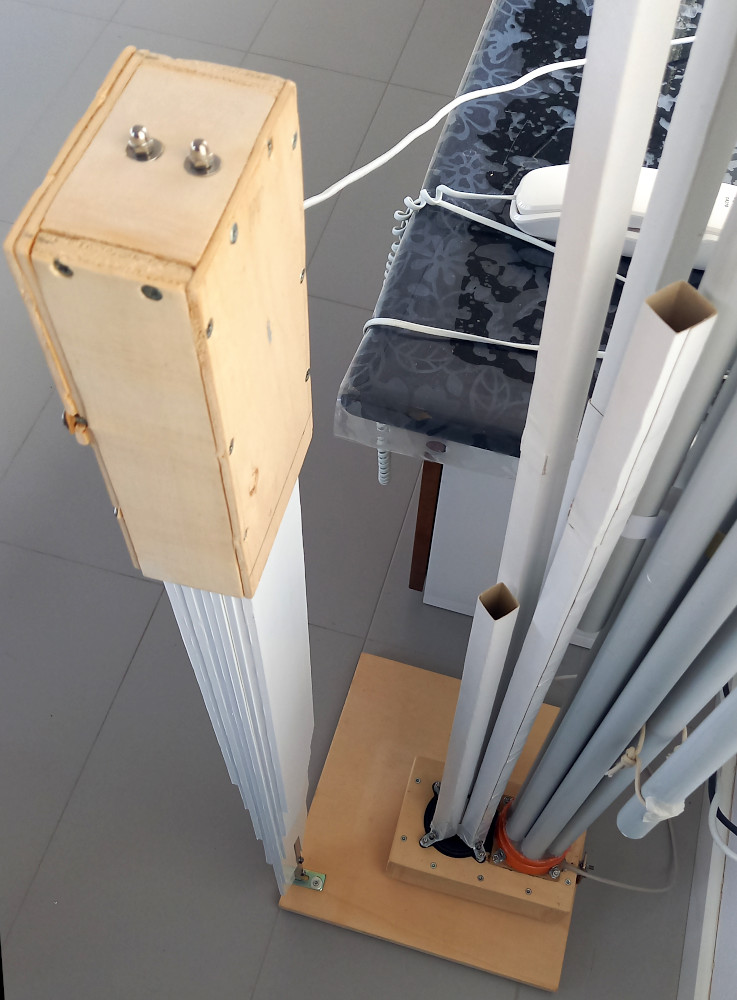
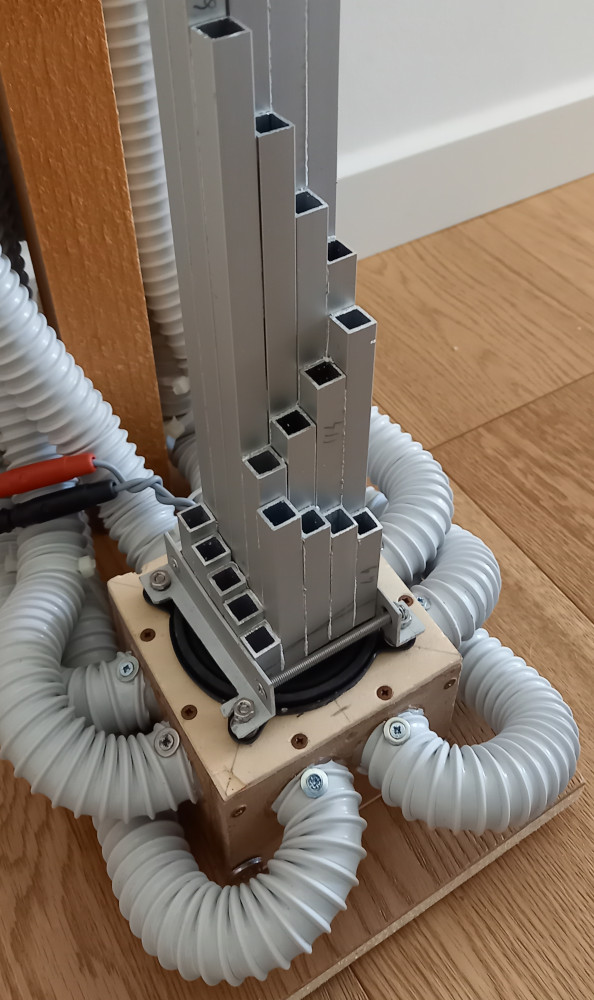
The mddOmni front acoustic load has sets of waveguides of increasing length positioned in front of the driver. A part of the acoustic energy emitted by the driver cone enters each guide. The same energy is re-emitted by acoustic diffraction, in different positions, with increasing delays, with spherical wave fronts and consistent with the direct emission of the driver. In the latest prototypes the guides are open on both sides with L/2 resonances. The driver's directional output becomes omnidirectional.
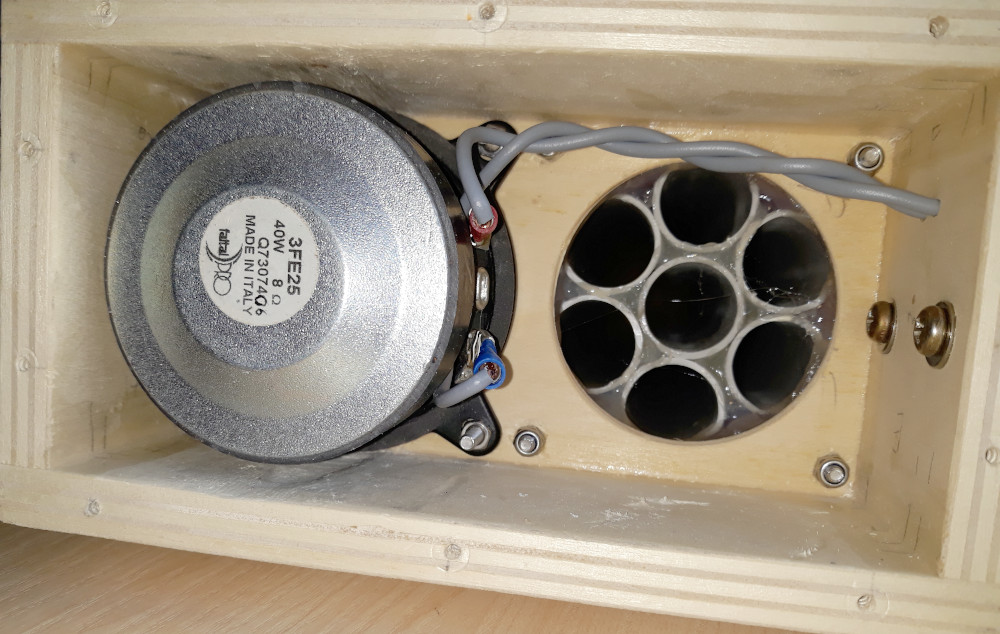
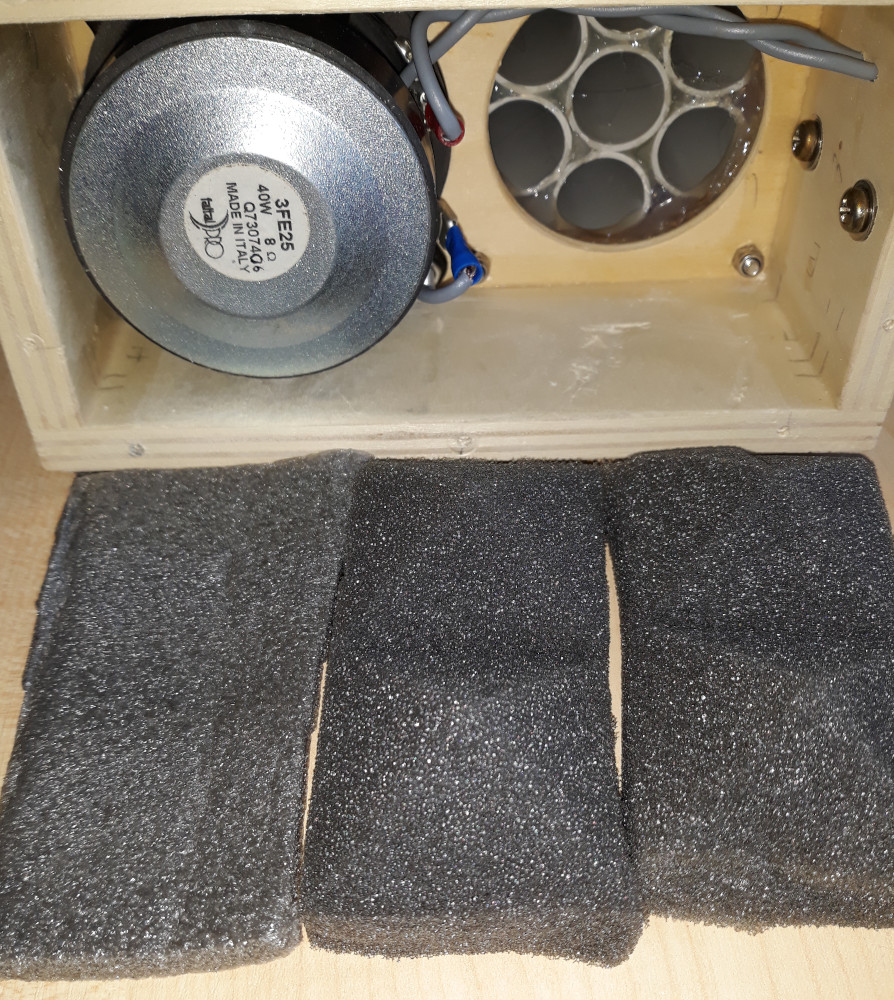
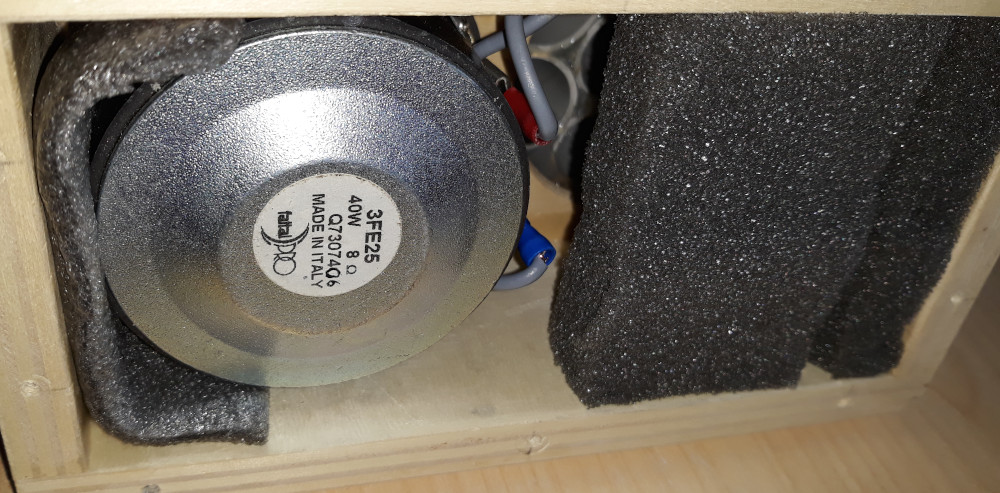
The mddTL rear acoustic load has multiple waveguides of increasing length attached to a compression chamber, it is a set of transmission lines with L/4 and L/2 resonant frequencies. At low frequencies the mddTL acoustic load is neutral with respect to the drivers and the listening environment.
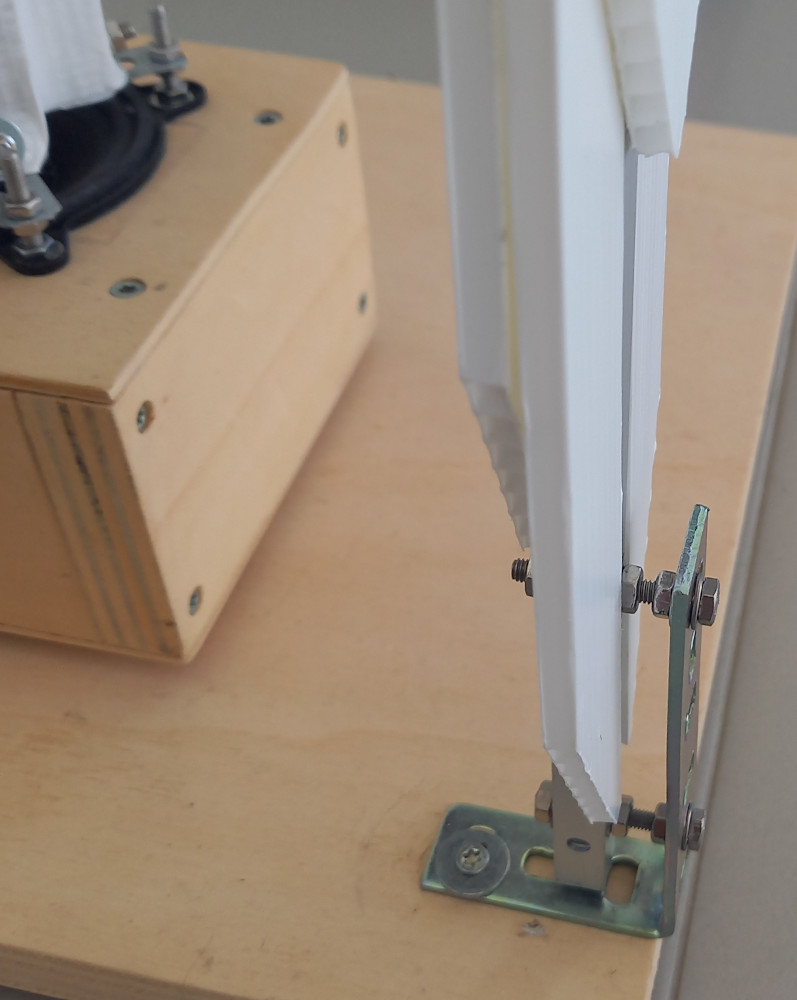
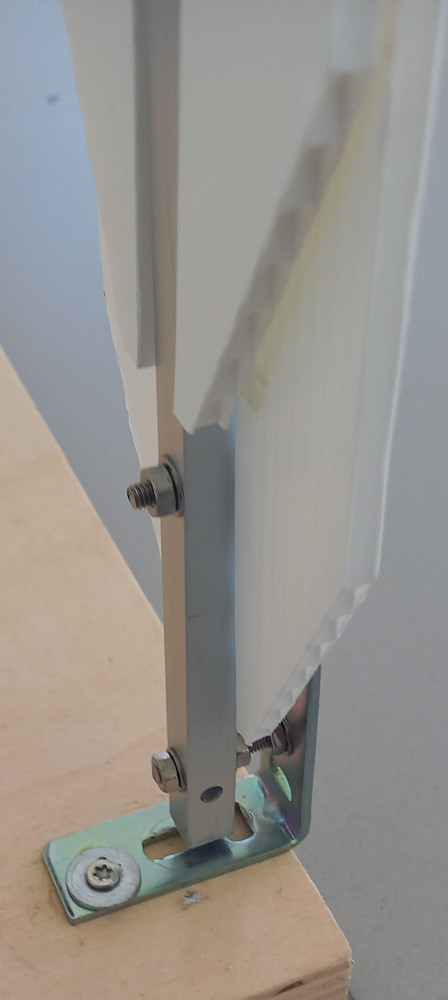
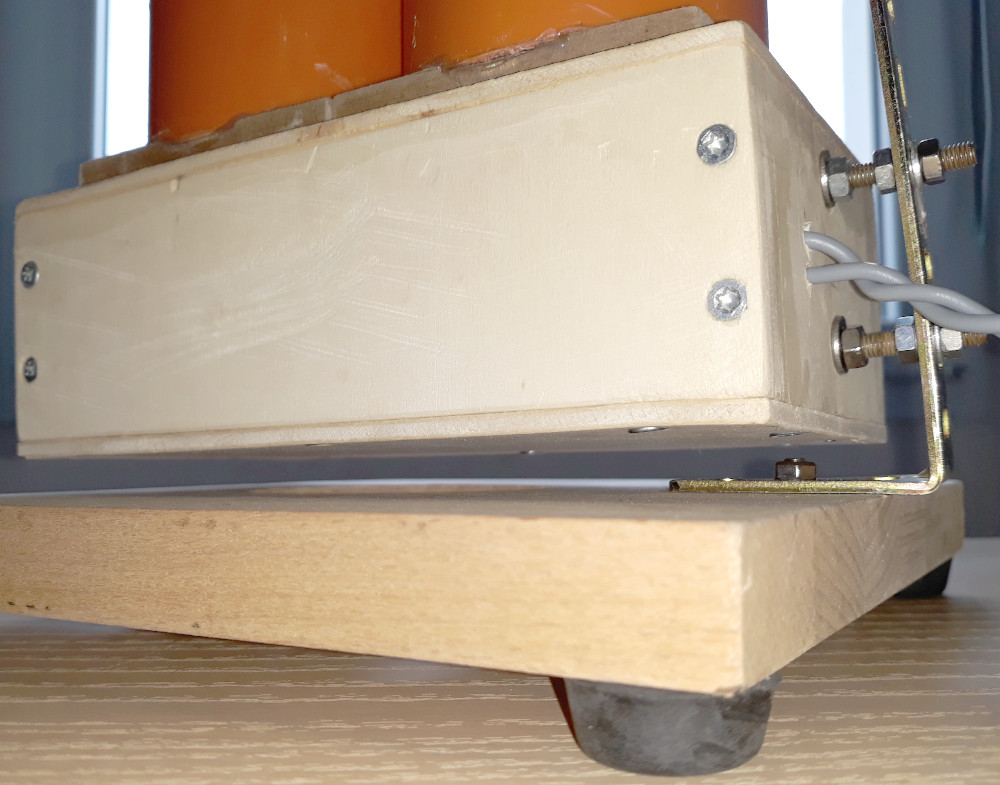
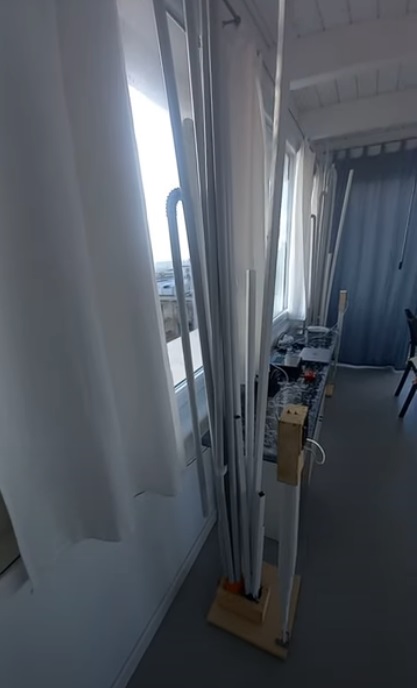
Subsonic resonance mount acoustically isolates the speaker from the floor in the audio band, improves reproduction detail. The asymmetric shape reduces the triggering of spurious vibrations.
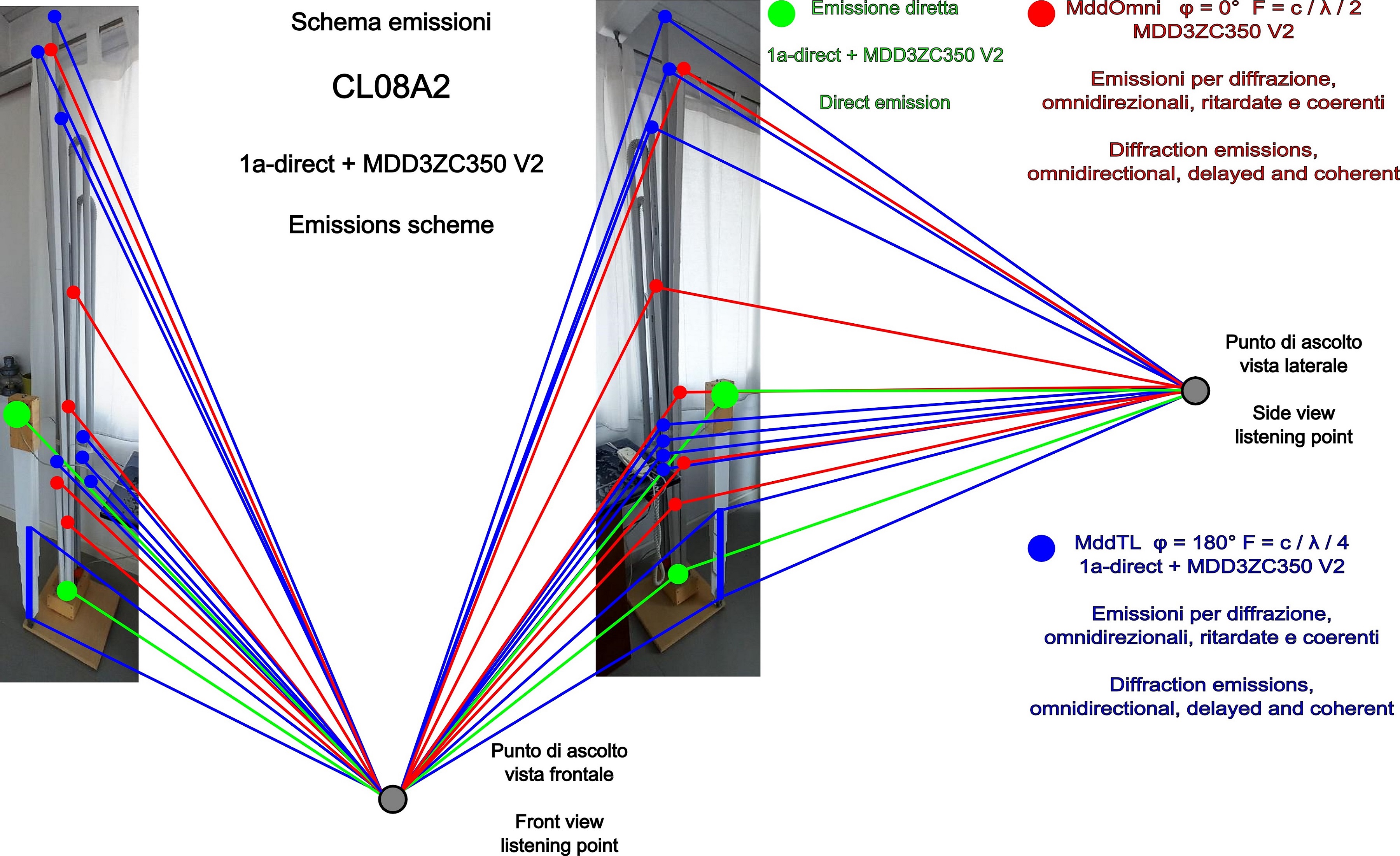
Multiple emissions simulate three-dimensional sound sources. An instrument emits sounds from multiple points at the same time, the multiple emission points simulate the instrument in 3D. MDD speakers are not able to recreate the exact size of the original instrument but listening improves compared to the reproduction of a point source.
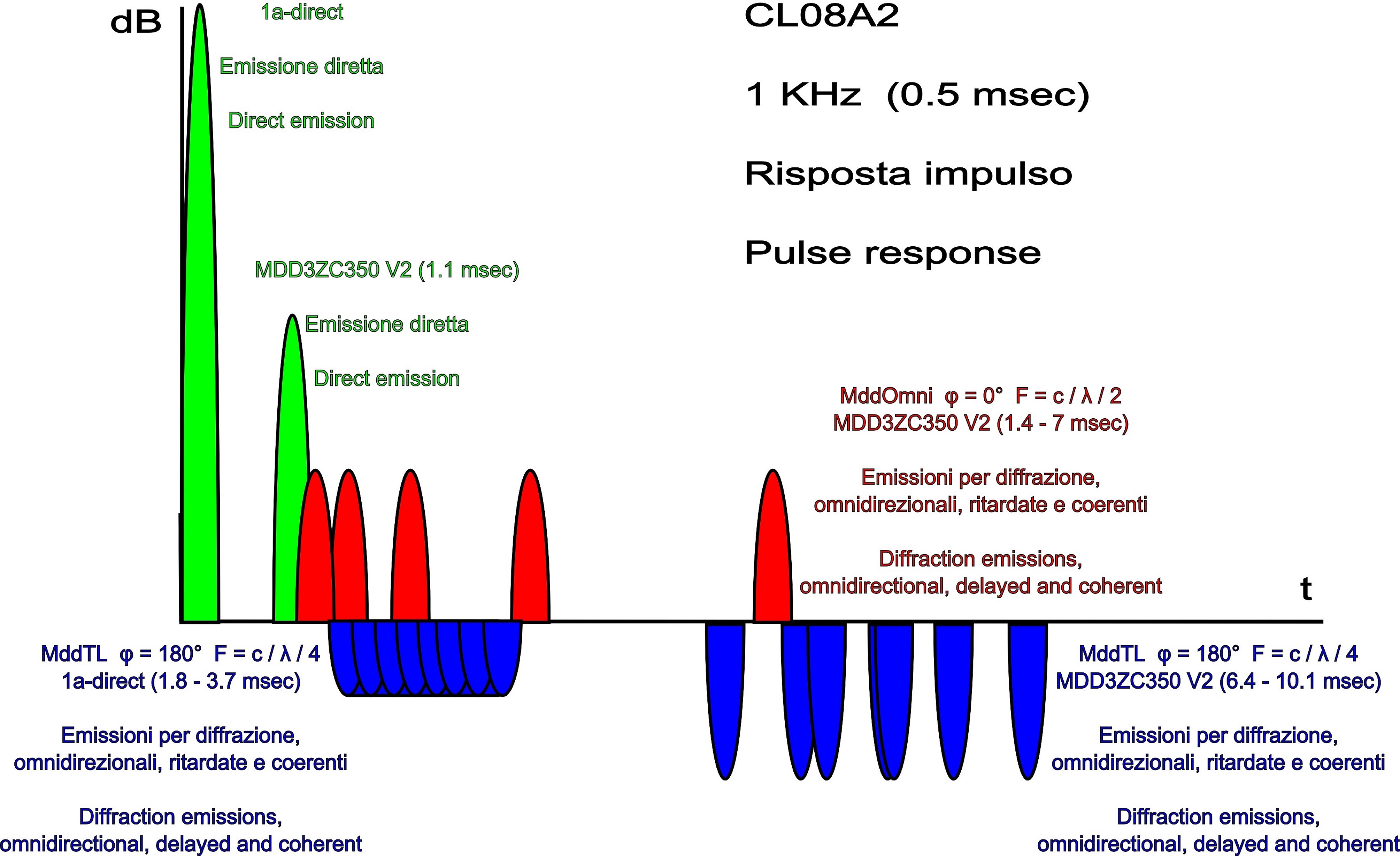
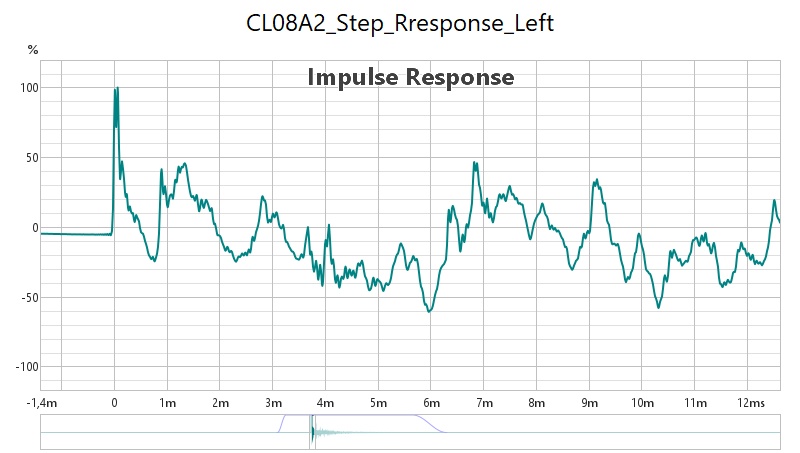
The Haas effect (precedence) occurs when two identical sounds arrive at the ear in succession. With delays greater than 5 milliseconds with simple sounds (clicks) the ear perceives distinct sounds. With more complex sounds the time increases to 40 milliseconds. The emission points of the mddOmni and mddTL acoustic loads are located at increasing distances from the driver and the secondary sound fronts have delays of between 1 and 10 milliseconds compared to the primary emission of the driver. The succession of sound fronts prevents the activation of the Haas effect, a single event cannot be perceived as two distinct sounds.
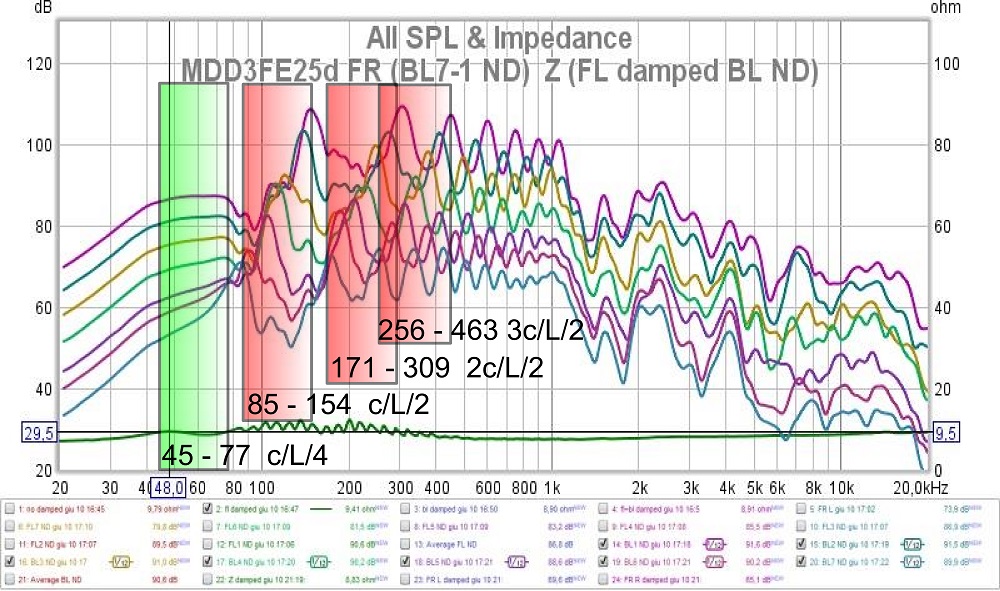
In standard TL speakers a waveguide is used as an acoustic screen to reproduce low frequencies. In general, the longer the guide, the greater the extension of the low frequencies, but the problem of interaction with the response of the loudspeaker and nearby walls must be resolved. The design of the mddTL rear acoustic load is much simpler. Multiple waveguides are used with the lengths calculated with the same formula that determines the frequencies of musical notes, the resonances of the waveguides are distributed homogeneously over an octave. With logarithmic series lengths the speaker is neutral with respect to the frequency response of the driver and the listening environment.
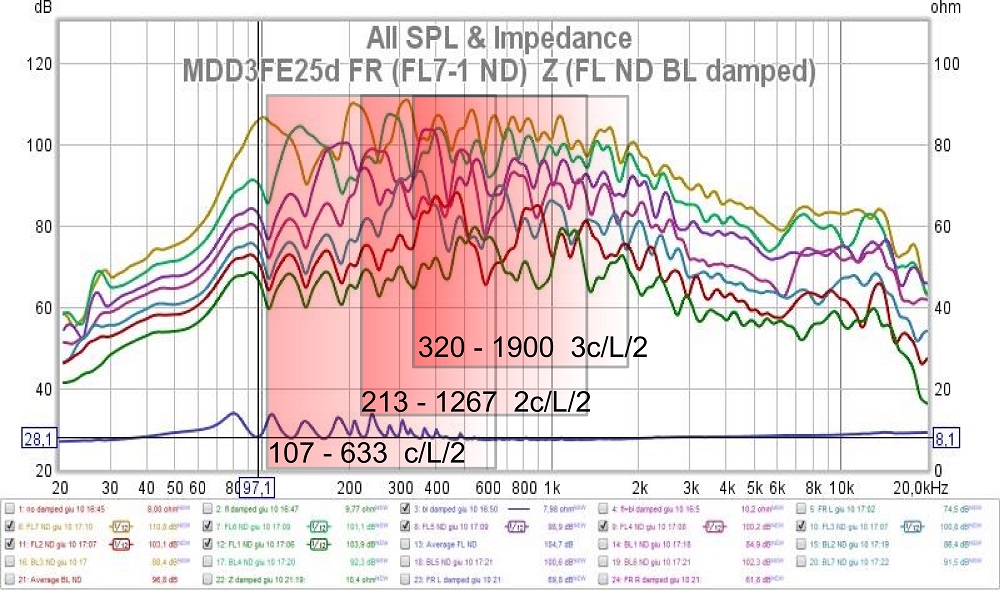
80dB + 80dB = 83dB,
80dB+60dB~80dB,
60dB + 60dB = 63dB.
other links
The characteristics of the listening environment are very important for the quality of playback. With MDD technology, part of the energy emitted by the speakers is used to generate secondary sound fronts, the spherical fronts generated by diffraction are coherent, delayed and optimize interaction with the room. The emotions produced by listening to recorded music can also be obtained without treating the room acoustically and with economical broadband speakers. MDD Multi Delays Diffraction. The multiple emissions simulate three-dimensional sound sources, the delays optimize listening in environments that are not acoustically treated, the diffraction makes the speaker omnidirectional at all frequencies.
Acoustic loads are made with multiple waveguides. Each single waveguide adds secondary, delayed and coherent sound fronts to all sounds even if the recording was made with microphones positioned in non-ideal points. The primary and secondary emissions are reflected by the environment and reach the listener who perceives them as compatible with a three-dimensional source present in the room. Omnidirectional emission in a reflective environment increases the amount of waves reflected from the listening room. When the reflections of the recording room are reproduced due to the Haas effect, the brain perceives them as a continuation of the previous signals. The succession: primary wave, coherent and delayed secondary waves, reflections from the listening room, reflections from the recording room become a single sound for the brain that is easier to interpret and pleasant to listen to. It decreases the time needed for memory to decode sounds and increases the time available for imagination. Playback is similar to listening to instruments live in your room. It's not the most faithful conditions to the original recording but it can be a lot of fun. The listening area is large and you can better follow the music from every point of the room.
I have reorganized the material on MDD projects, there are three common components:
1 - mddOmni (3D effect, anti Haas effect, omnidirectional acoustic diffractor, sound recognition),
2 - mddTL (neutral cabinet, logarithmic sum),
3 - subsonic resonance support (asymmetric base).
mddOmni


The mddOmni front acoustic load has sets of waveguides of increasing length positioned in front of the driver. A part of the acoustic energy emitted by the driver cone enters each guide. The same energy is re-emitted by acoustic diffraction, in different positions, with increasing delays, with spherical wave fronts and consistent with the direct emission of the driver. In the latest prototypes the guides are open on both sides with L/2 resonances. The driver's directional output becomes omnidirectional.
mddTL



The mddTL rear acoustic load has multiple waveguides of increasing length attached to a compression chamber, it is a set of transmission lines with L/4 and L/2 resonant frequencies. At low frequencies the mddTL acoustic load is neutral with respect to the drivers and the listening environment.
subsonic resonance support with asymmetric base




Subsonic resonance mount acoustically isolates the speaker from the floor in the audio band, improves reproduction detail. The asymmetric shape reduces the triggering of spurious vibrations.
3D effect

Multiple emissions simulate three-dimensional sound sources. An instrument emits sounds from multiple points at the same time, the multiple emission points simulate the instrument in 3D. MDD speakers are not able to recreate the exact size of the original instrument but listening improves compared to the reproduction of a point source.
anti Haas effect


The Haas effect (precedence) occurs when two identical sounds arrive at the ear in succession. With delays greater than 5 milliseconds with simple sounds (clicks) the ear perceives distinct sounds. With more complex sounds the time increases to 40 milliseconds. The emission points of the mddOmni and mddTL acoustic loads are located at increasing distances from the driver and the secondary sound fronts have delays of between 1 and 10 milliseconds compared to the primary emission of the driver. The succession of sound fronts prevents the activation of the Haas effect, a single event cannot be perceived as two distinct sounds.
omnidirectional acoustic diffractor
Acoustic diffraction makes the speaker omnidirectional at all frequencies. According to Huygens' principle, every point on a sound wave front is a secondary source of spherical waves. The end of the waveguides of the mddOmni and mddTL acoustic loads are omnidirectional emission points of a linear acoustic diffractor across the entire audio spectrum.neutral cabinet

In standard TL speakers a waveguide is used as an acoustic screen to reproduce low frequencies. In general, the longer the guide, the greater the extension of the low frequencies, but the problem of interaction with the response of the loudspeaker and nearby walls must be resolved. The design of the mddTL rear acoustic load is much simpler. Multiple waveguides are used with the lengths calculated with the same formula that determines the frequencies of musical notes, the resonances of the waveguides are distributed homogeneously over an octave. With logarithmic series lengths the speaker is neutral with respect to the frequency response of the driver and the listening environment.
logarithmic sum

80dB + 80dB = 83dB,
80dB+60dB~80dB,
60dB + 60dB = 63dB.
other links
psychoacoustics
asymmetric base
CL08A2
- Home
- Loudspeakers
- Planars & Exotics
- MDD Multi Delays Diffraction (Multi TL, omnidirectional, single drive, ...)
